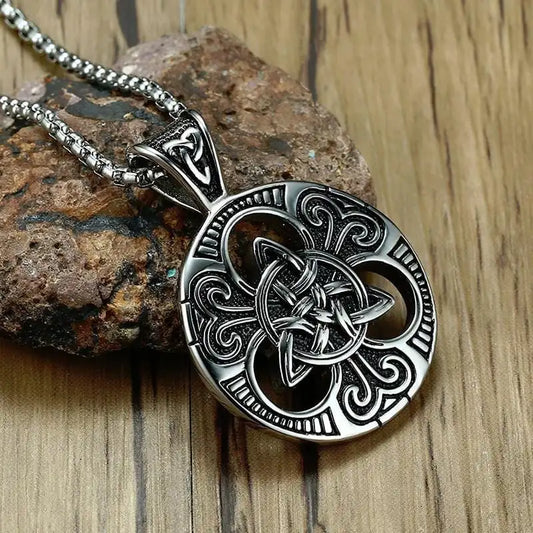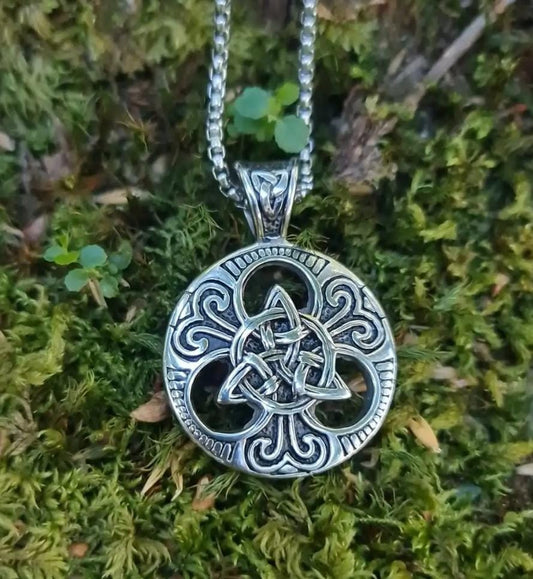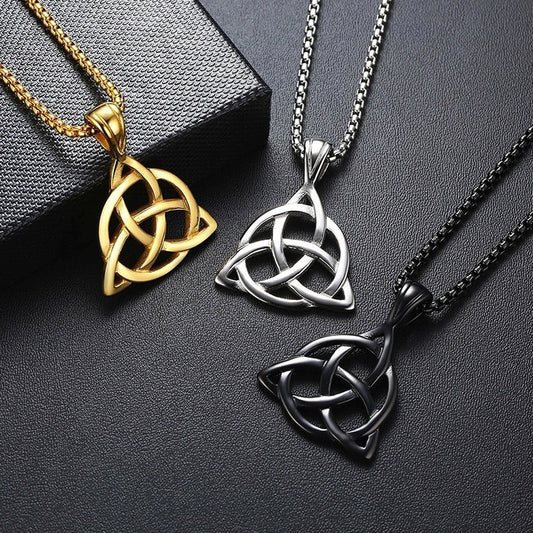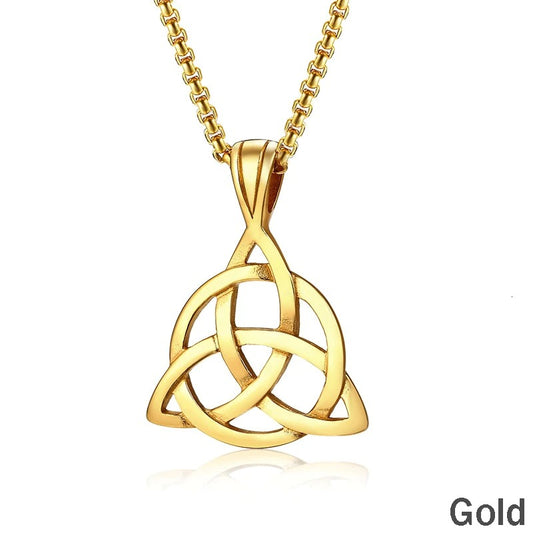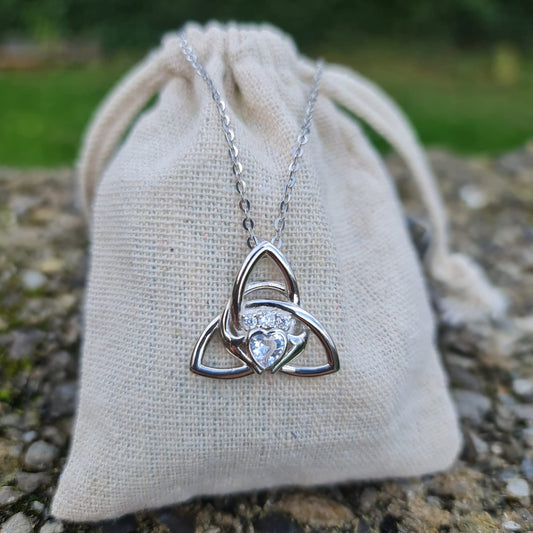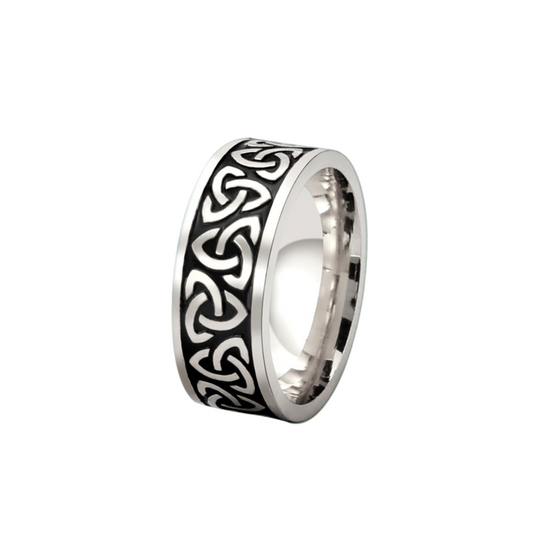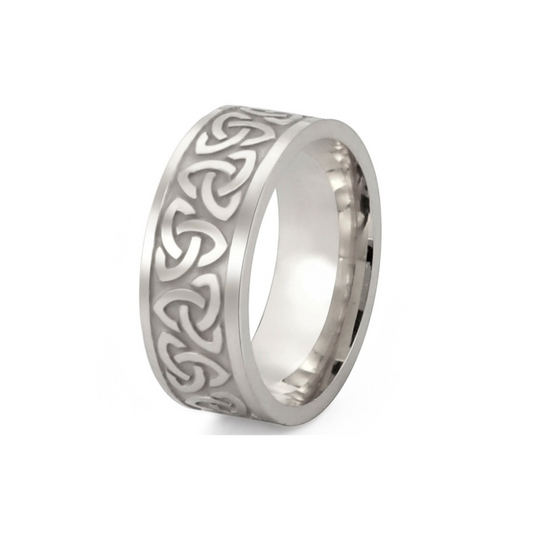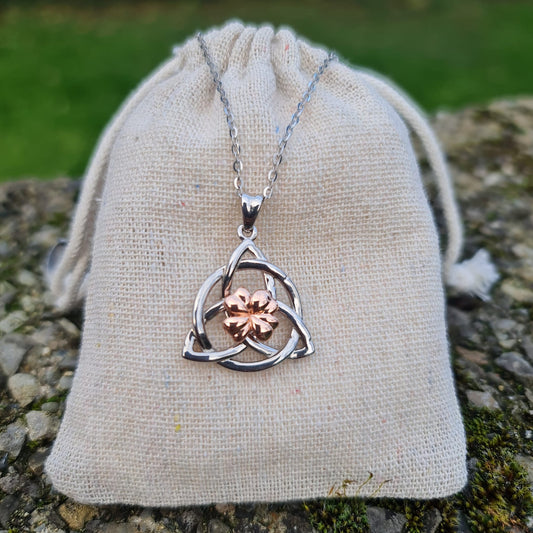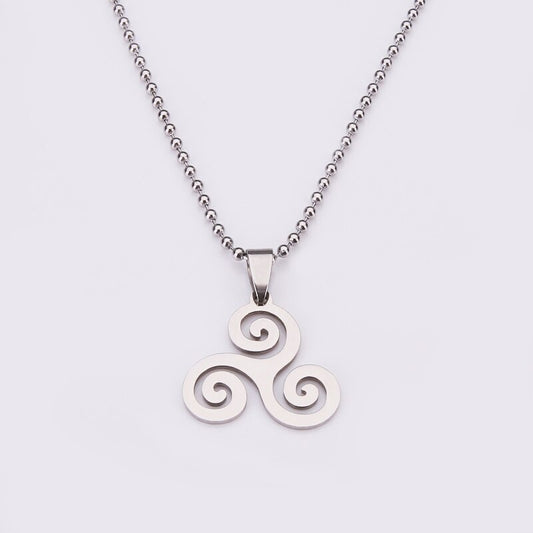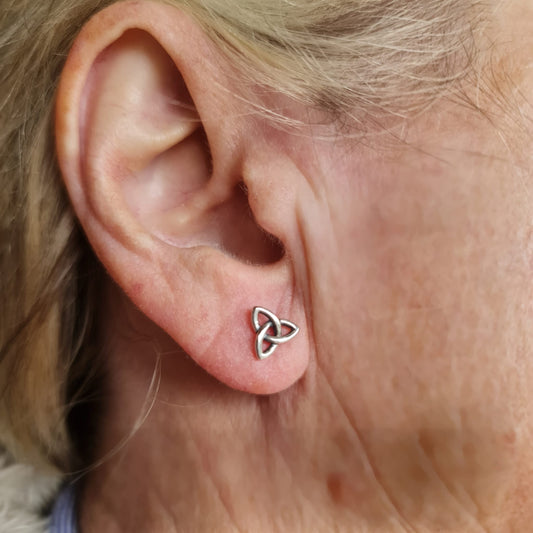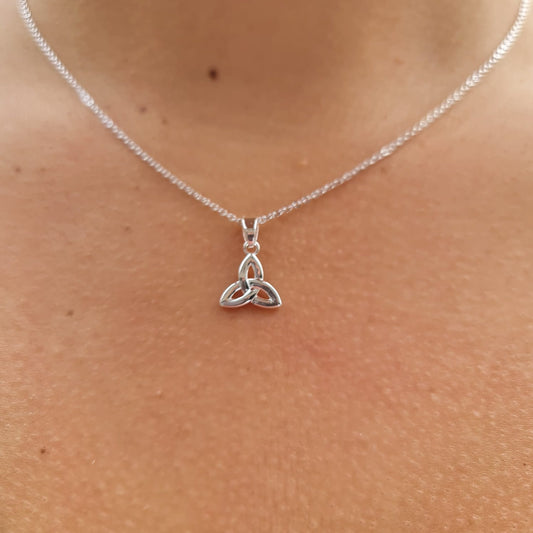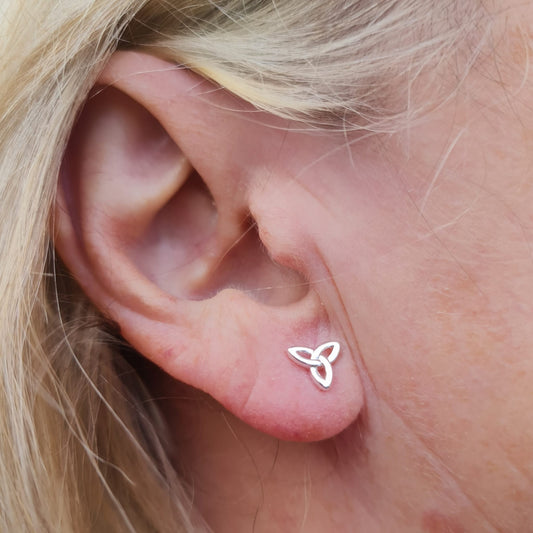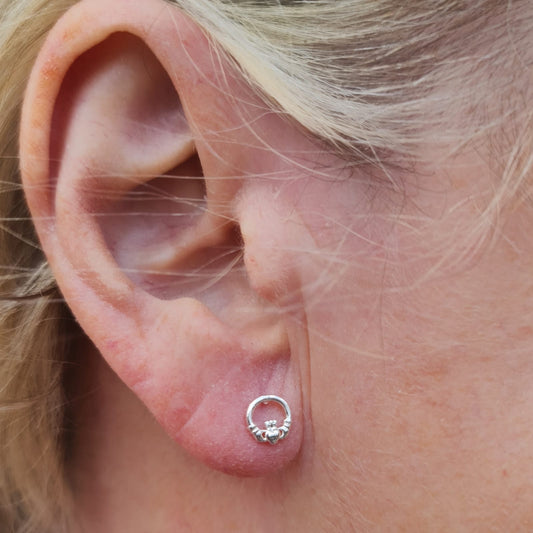Celtic Knot Jewelry: A Comprehensive Guide
From the heart of history and symbolism to its meticulous crafting process, Celtic knot jewelry is a captivating subject. Celtic Knot jewelry can be for both women and men. There is a beautiful complexity in its simple interlaced patterns, representing an endless cycle that reflects the ancient Celts’ understanding of eternity.
So lets explore the intricacies of Celtic knot jewelry, its rich history, and the process behind its creation, to guide you in choosing the right piece and properly maintaining its beauty for a lifetime.
History of Celtic Knot Jewelry
The rich tapestry of Celtic knot jewelry is woven with more than just threads of metal. Its origins are shrouded in the mists of time, dating back to around 450 AD, when it was first created by the ancient Celts.
Celtic knot jewelry, an artistic legacy from a culture deep-seated in spirituality, was often seen adorning the pages of religious manuscripts, walls of monastic settlements, and high crosses around Ireland and Scotland.
The Celts were an incredibly artistic society, using intricate designs and patterns to express their beliefs and values. They believed in the interconnectedness of life and death, nature and the divine, and this belief is embodied in Celtic knot jewelry, which includes Celtic knot pendants, Celtic knot rings, and Celtic knot earrings. The knots, with no clear start or finish, symbolize the intertwining of physical and spiritual paths, the eternal cycle of life, and the perpetual flow of time.
Symbolism in Celtic Knot Jewelry
The symbolic essence of Celtic knot jewelry is as intriguing as its history. These knot patterns are laden with meanings, each design subtly narrating a tale, conveying an emotion, or representing a certain aspiration. Some of the most popular symbols in Celtic knot jewelry include the Trinity Knot, representing the Holy Trinity or the triple nature of the goddess; and the Lover’s Knot, symbolizing the intertwining of two lives in love and friendship.

Celtic Trinity Knot Necklace - Example of Celtic Knot Jewelry
Celtic knot jewelry's imagery is deeply intertwined with nature, the supernatural, and spirituality. Its patterns often draw on the world’s natural elements like animals, trees, and celestial bodies. From the Dara Knot, inspired by an oak tree's strong roots, representing strength and wisdom; to the Sailor’s Knot, symbolizing the sea's perpetual waves, the symbolism in Celtic knot jewelry holds a fascinating charm that resonates with many people today.
Types of Celtic Knot Jewelry
Now that we've discussed the origins and symbolism of Celtic knot jewelry, let's explore its diverse forms. Celtic knot jewelry encompasses a wide range of pieces, from necklaces and rings to bracelets and earrings. Each type carries a unique charm and can be chosen based on personal style, symbolic meaning, or a combination of both.
Celtic knot rings, often used in engagement or wedding ceremonies, symbolize a never-ending bond between two people. Celtic knot necklaces can serve as beautiful keepsakes or gifts, embodying deep meanings within their intricate patterns. Celtic knot earrings and bracelets offer a unique way to incorporate this ancient artistry into everyday attire, adding an elegant touch of history and symbolism to any outfit.

Celtic Knot Ring - Shop here
Crafting Process of Celtic Knot Jewelry
Understanding the intricate craftsmanship behind Celtic knot jewelry deepens our appreciation for these remarkable pieces. Traditional techniques, often passed down through generations, are used to meticulously mold, carve, and engrave the designs into precious metals like silver and gold.
The crafting process of Celtic knot jewelry starts with an artistic sketch, carefully designed to ensure the pattern flows seamlessly. The sketch is then transformed into a 3D model using wax or clay. The model is cast with the desired metal, and the excess is carefully filed away, revealing the beautiful knot design. Each piece of Celtic knot jewelry then undergoes a detailed finishing process, which may include polishing, oxidizing, or adding gemstones, to highlight the intricacy of the knot design and add a touch of personal flair.
How to Choose the Right Celtic Knot Jewelry
Selecting the right piece of Celtic knot jewelry is an individual journey. First, consider what the jewelry symbolizes for you. Whether it's a reflection of your Celtic heritage, a spiritual belief, a celebration of nature, or simply an appreciation for its artistry, let this guide your choice.
Next, consider the type of jewelry that suits your style and comfort. Celtic knot necklaces, for example, may be more suitable for someone who prefers a prominent piece, while a Celtic knot ring or bracelet might be ideal for a more subtle display of the ancient artistry.
Lastly, consider the material and quality of the Celtic knot jewelry. Authentic pieces made from high-quality silver or gold will not only look more beautiful but will also last longer, allowing you to cherish your Celtic knot jewelry for years to come.
Maintaining and Caring for Your Celtic Knot Jewelry
Preserving the beauty of your Celtic knot jewelry requires some care. To maintain its shine, regularly clean your jewelry with a soft, lint-free cloth. For a deeper cleanse, use a mild soap and warm water, gently scrubbing with a soft toothbrush. Rinely thoroughly and dry well.
Avoid wearing your Celtic knot jewelry when using chemicals or doing strenuous activities to prevent damage. Always store your jewelry in a dry, clean place, preferably in individual pouches to prevent scratching.
Celtic knot jewelry is more than just an adornment; it's a piece of history, a symbol of eternal values, and a testament to exceptional craftsmanship. Each knot carries its own story, waiting to intertwine with yours. In the end, choosing and caring for your Celtic knot jewelry is a personal journey—one steeped in history, symbolism, and an appreciation for this ancient Celtic art form.
In this ever-changing world, Celtic knot jewelry remains a beautiful constant, echoing the ancient wisdom of eternity in its intertwining loops. So the next time you glance at your Celtic knot ring, necklace, bracelet, or earring, remember, you’re not just wearing a piece of jewelry, but a piece of timeless history and a symbol of life's beautiful interconnectedness.
Celtic Knot Jewelry FAQ's
What is the history behind Celtic knot jewelry?
Celtic knot jewelry originated from the ancient Celts around 450 AD. These artistic creations are typically adorned with intricate knot patterns that signify the Celts' belief in the interconnectedness of life and the perpetual flow of time. The Celtic knot jewelry has been used throughout history as religious symbols and personal adornments, showcasing the Celts' deeply rooted spirituality.
What is the symbolism of Celtic knot jewelry?
Each design in Celtic knot jewelry holds a particular meaning or symbolism, often reflecting the Celts' beliefs and values. The patterns often embody elements of nature, spirituality, and the divine. For instance, the Trinity Knot represents the Holy Trinity or the goddess's triple nature, and the Lover’s Knot signifies the intertwining of two lives in love and friendship.
What types of Celtic knot jewelry are there?
Celtic knot jewelry comes in various forms, including necklaces, rings, bracelets, and earrings. Each piece can be chosen based on personal style or the symbolic meaning it carries. Celtic knot rings often symbolize a never-ending bond, making them popular choices for engagement or wedding ceremonies.
How is Celtic knot jewelry crafted?
Celtic knot jewelry is created using traditional techniques, often passed down through generations. The process starts with a sketch of the design, which is then transformed into a 3D model using wax or clay. The model is cast with precious metals like silver or gold, and the excess material is carefully filed away to reveal the beautiful knot design.
How can I care for my Celtic knot jewelry?
To maintain the beauty and longevity of your Celtic knot jewelry, it should be regularly cleaned with a soft, lint-free cloth. For a deeper cleanse, use a mild soap and warm water, gently scrubbing with a soft toothbrush. Avoid wearing your jewelry when using chemicals or engaging in strenuous activities. It should be stored in a dry, clean place, preferably in individual pouches to prevent scratching.


